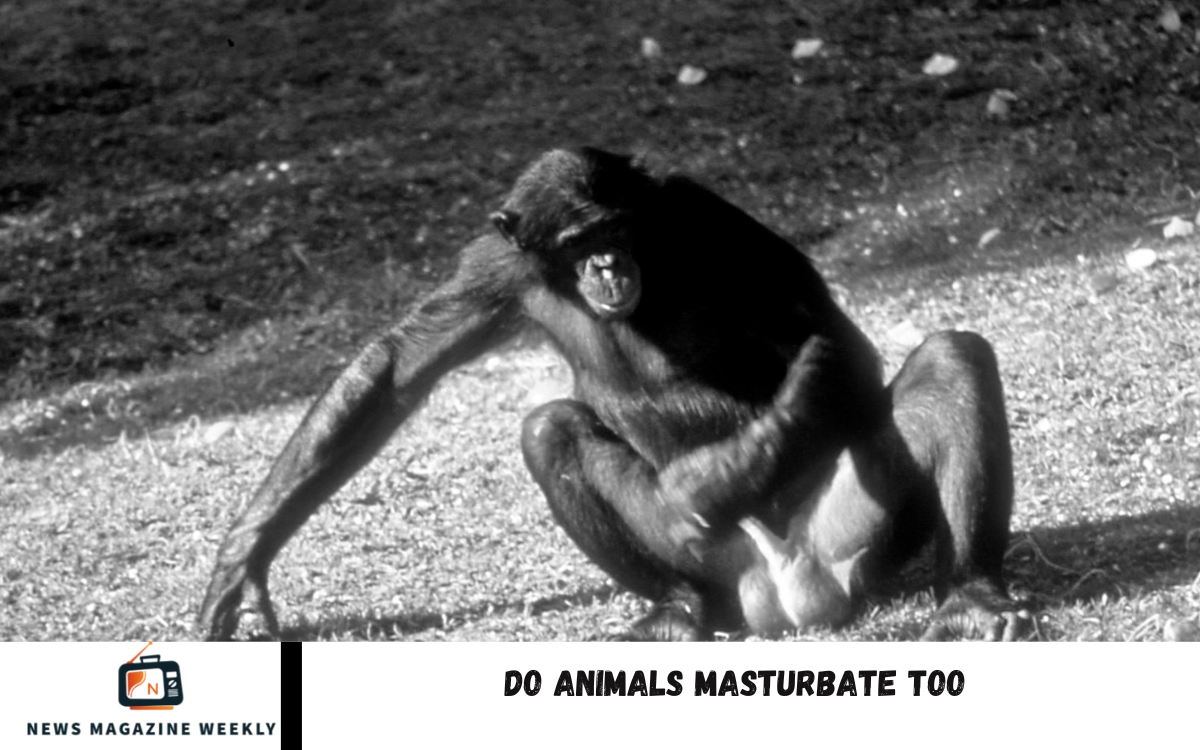When it comes to animal behavior, we often focus on things like hunting, mating, and social interaction. But one topic that rarely comes up—yet sparks a lot of curiosity—is masturbation. Yes, animals do masturbate, and it’s more common than you might think. From monkeys and dolphins to dogs and even some birds, many species have been observed pleasuring themselves in various ways.
While it might sound odd or amusing from a human perspective, masturbation in animals actually serves natural purposes. It can help relieve stress, keep their reproductive organs healthy, or even increase their chances of successful mating by “clearing out the system.” Scientists have studied this behavior not just to understand animals better but also to explore the evolutionary roots of human sexuality.
This topic reminds us that animals aren’t so different from us when it comes to certain instincts. Whether it’s using paws, rubbing against objects, or even using tools, in the case of some primates, animal self-pleasure is a fundamental and fascinating part of biology. In this article, we’ll explore the surprising ways animals engage in this behavior—and what it reveals about the complex world of animal sexuality.
A Taboo Topic in the Wild
When we think about wildlife, we often picture animals hunting, raising their young, or living in packs. But there’s a whole side of animal behavior that’s rarely talked about—because it makes people uncomfortable. One such subject is masturbation. While it might feel like an awkward or even humorous topic, self-pleasure isn’t just a human habit. It exists throughout the animal kingdom and has been observed in many species, from monkeys and dolphins to household pets like dogs and cats.
For a long time, this behavior was ignored or dismissed by researchers, mainly because of the taboo surrounding sexual activity outside reproduction. However, as science has progressed, experts have become more open to studying this natural behavior and uncovering its purpose. Just like humans, animals may engage in masturbation to relieve stress, maintain genital health, or simply because it feels good.
Talking about this might feel strange at first, but it’s an essential part of understanding animal biology and behavior. By exploring this “taboo” topic, we gain a deeper appreciation for how complex and instinct-driven the animal world really is—reminding us that nature doesn’t follow our social rules.
Yes, Animals Do Masturbate – Here’s the Proof
But there’s plenty of evidence showing that masturbation is a natural part of life for many animals. Researchers, wildlife observers, and even everyday pet owners have witnessed animals pleasuring themselves in different ways. In fact, masturbation has been recorded in species ranging from primates and dolphins to elephants, dogs, and even some types of birds.
For example, male chimpanzees have been seen stimulating themselves with their hands, while female orangutans have used sticks as tools for self-pleasure. Dolphins, known for their high intelligence and playful behavior, often rub themselves against objects—or even each other—for sexual release. Even in your own home, if you’ve ever seen a dog humping a pillow or blanket, you’ve witnessed a form of masturbation.
Scientists believe these behaviors aren’t random or meaningless. Masturbation can help animals manage sexual tension, improve their chances of successful mating, or simply provide comfort and stress relief. The fact that so many different animals, across various environments and evolutionary paths, engage in this behavior suggests it’s a natural, healthy part of life—not something shameful or rare.
Which Animals Masturbate? From Apes to Birds
Masturbation isn’t limited to humans or even just a few species—it’s widespread across the animal kingdom. Some of the clearest examples come from primates, our closest relatives. Chimpanzees, bonobos, gorillas, and orangutans have all been observed masturbating, sometimes using their hands and, in some cases, even using sticks or other objects to enhance the experience. Bonobos, in particular, are famous for their very open and frequent sexual behaviors, including self-pleasure.
But it’s not just primates. Dolphins are another standout example. Both male and female dolphins have been seen rubbing themselves against the seafloor, floating debris, or even using other dolphins to masturbate. Horses often engage in “self-stimulation,” and elephants, especially young males, have been observed playing with their trunks to pleasure themselves.
Interestingly, even birds aren’t left out. Some species, like parrots, rub themselves against perches or toys, especially in captivity. Self-stimulation is quite common among rodents, such as squirrels and mice, too, and it is often linked to reproductive cycles and stress management.
Read Also: Do Animals Commit Suicide
Why Do Animals Masturbate? More Than Just Pleasure
It might seem like animals masturbate simply because it feels good—and that’s partly true. Pleasure plays a significant role, but the reasons behind this behavior are much more profound. For many animals, masturbation serves important biological and survival purposes beyond just immediate gratification.
One primary reason is reproductive health. In males, masturbation can help remove old or less viable sperm, making room for fresher, more competitive sperm when it’s time to mate. This can actually increase the chances of successful reproduction. In females, genital stimulation might help maintain healthy reproductive tissues and even signal sexual readiness to potential mates.
Masturbation also acts as a natural stress reliever. Animals living in complex social groups, like primates and dolphins, often face tension from competition, dominance struggles, or environmental pressures. Self-pleasure can provide a way for these animals to release that stress and calm down.
Frequently Asked Questions
Do animals use objects to masturbate?
Yes. Some animals, like orangutans or dolphins, have been seen using sticks, rocks, or other objects for stimulation.
Is this behavior seen in the wild or just in captivity?
It occurs in both environments. While it’s more frequently observed in captivity (where animals are under close observation), wild animals also do it.
Is masturbation harmful to animals?
No, in most cases, it’s a healthy and natural behavior. It only becomes a concern if it’s excessive or caused by stress or medical issues.
Can this behavior be a sign of a problem in pets?
Sometimes. If your pet is obsessively humping or licking themselves, it could be a sign of boredom, anxiety, or a health issue—best to consult a vet.
Why don’t we hear more about animal masturbation?
Because it’s often considered taboo or embarrassing, many people (and even some researchers) avoid discussing it. But it’s a regular and fascinating part of animal behavior.
Conclusion
Masturbation in animals might seem surprising, even uncomfortable, but it’s an entirely natural and widespread behavior across many species. From primates and dolphins to birds and household pets, animals engage in self-pleasure for reasons that go beyond just physical enjoyment. It can support reproductive health, relieve stress, and help animals navigate complex social and environmental challenges.

